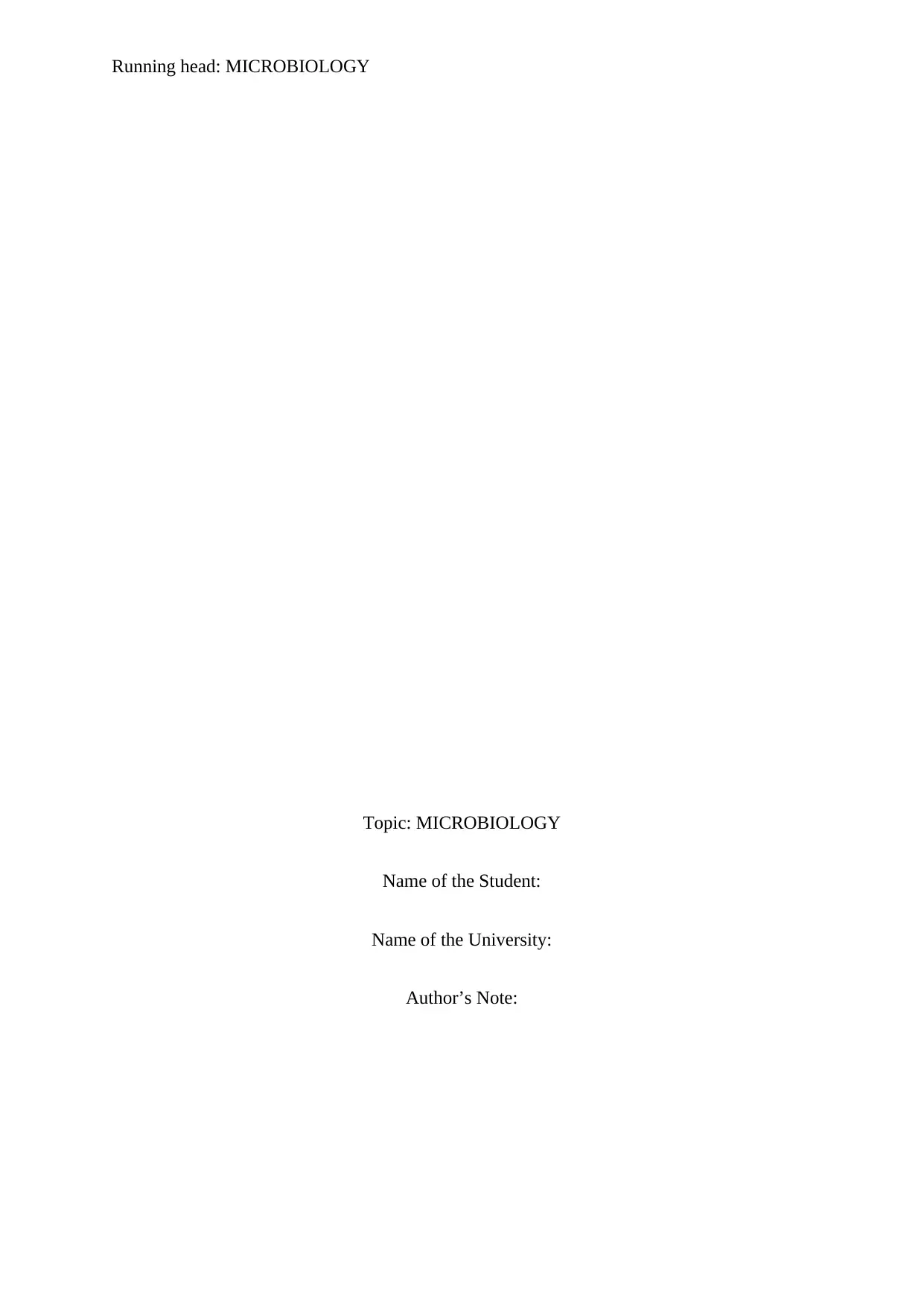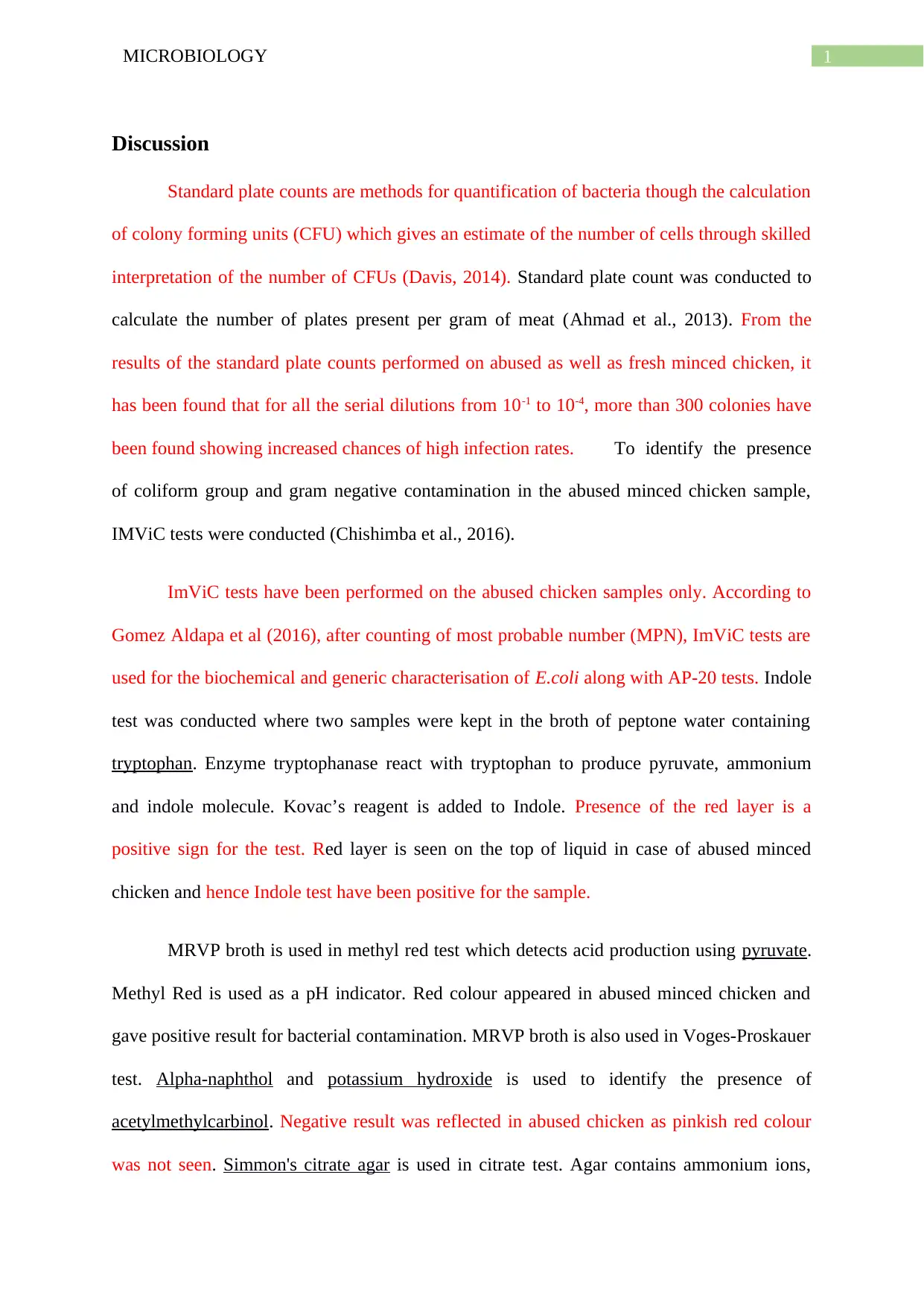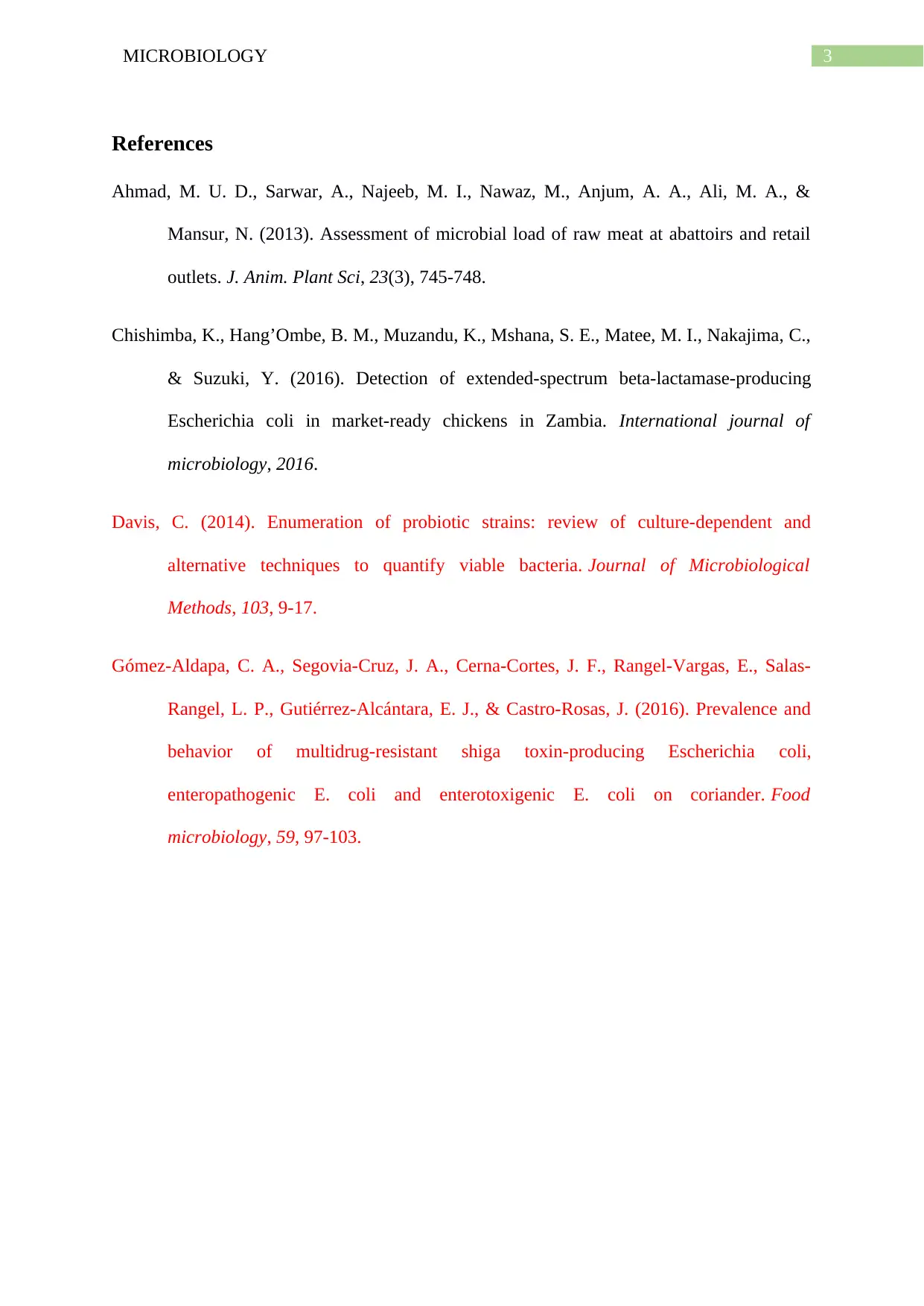Standard Plate Counts and IMViC Tests for Bacterial Contamination in Minced Chicken
VerifiedAdded on 2023/04/25
|4
|695
|441
AI Summary
This article discusses the use of standard plate counts and IMViC tests to identify bacterial contamination in minced chicken. The article also covers the results of the tests and their interpretation.
Contribute Materials
Your contribution can guide someone’s learning journey. Share your
documents today.
1 out of 4








![[object Object]](/_next/static/media/star-bottom.7253800d.svg)